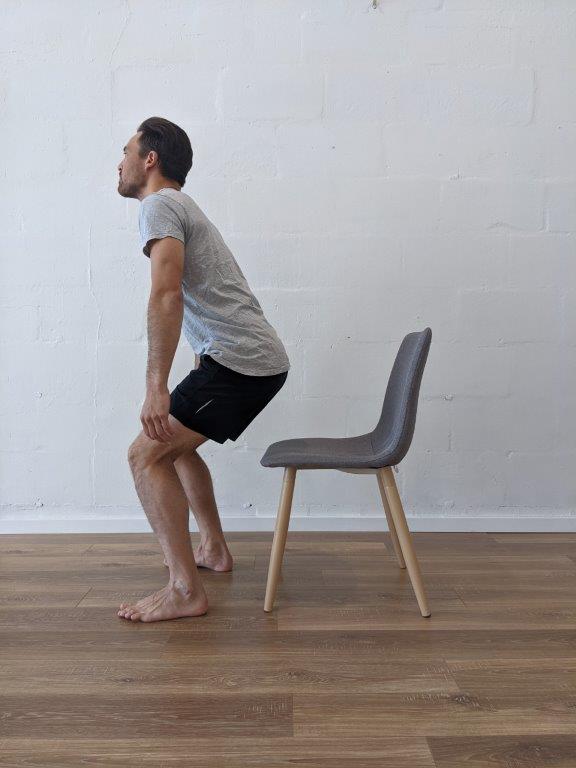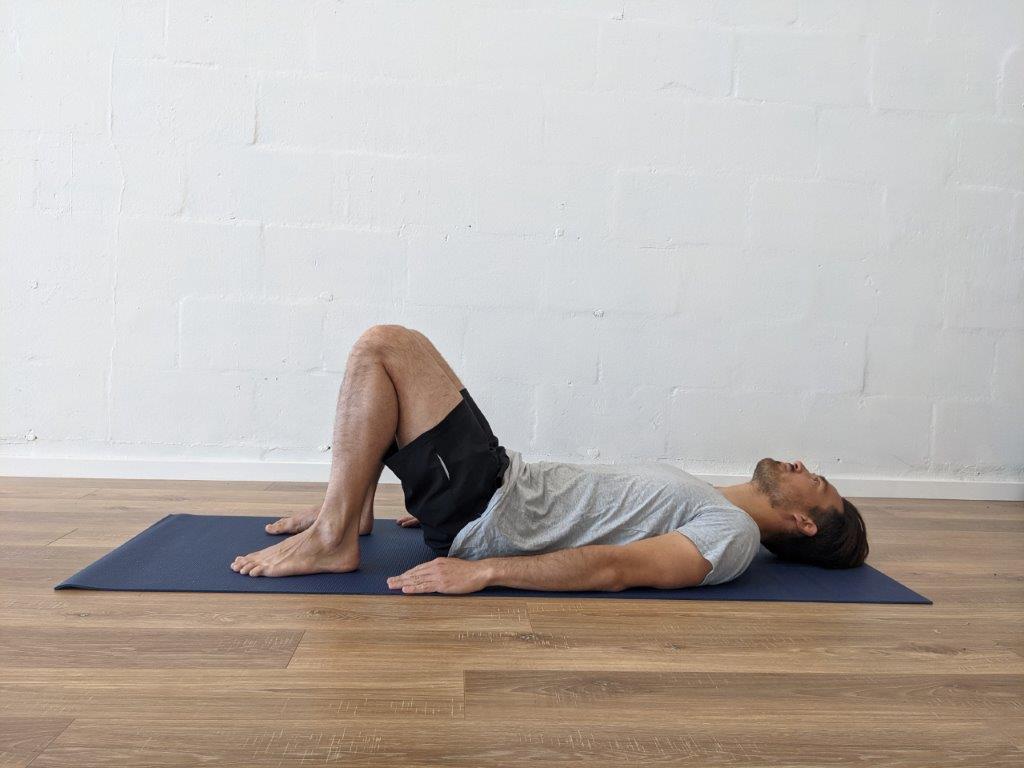How To Relieve Lower Back Pain
Lower back pain (LBP), one of the most common issues we see come through the doors at Myo Well. 8 out of 10 people will experience some form of back pain during their lives (read about Jesse’s experience with it here). If it’s so common, surely there are well known ways to relieve it?
Yes and No is the answer to that. There are many possible reasons for LBP to occur, where it is located and what sort of sensation you are experiencing. So let’s have a look at the most common situation we see in the Centre.
Which is pain or a constant dull ache over the sacrum and spreading out across the upper glutes (see pic below).
The majority of the time LBP we see at Myo Well is caused by muscular protection surrounding the area. Clients will report performing an innocuous movement when the pain begins. The most common action that seems to flare things up for people is bending forward and twisting at the same time. (I’ve had someone that hurt their back while wiping their backside on the toilet!)
More often than not, the innocuous movement that seems to injure your back, is really, the straw that breaks the camels back (so to speak). Before we get into the stretches and exercises we can do to relieve back pain symptoms, let’s have a look at a few questions that we often ask clients in our sessions. This is to help get an idea on what may be the issue. You will need to look back on the 2 weeks to a month before inuring your back.
Ask yourself the below questions (questions generally asked in an appointment). Then ask yourself, can you find a reason for the back pain? Can you make a change so the back pain isn’t perpetuated or exacerbated?
– Have I been lifting/doing anything to overload my back?
– Have I had any lifestyle changes before the injury?
– Has my work environment/duties changed?
– Have I injured my back previously, how?
– Have I had a fall or incident of unexpected impact?
Common reasons we hear in the clinic are:
– I have been sitting/driving more in my job
– Life/work has been more stressful lately
– I had to cover a shift for someone and I was lifting more than usual
– I have been in the garden more the last couple of weeks
Hopefully that gets you thinking more about what may have caused your LBP. Now let’s take a look at what you can do to relieve that muscular pain and protection. A combination of all or some of the below may be required.
– Self Massage
– Stretching
– Gentle Movement
– Strengthening
Self Massage & Stretching
For the scenario we are talking about here I would usually be instructing clients to stretch and self treat (ball or foam roller) the following areas: Hamstrings (ball or roller), Glutes (ball or roller), Quadratus Lumborum (ball), Upper and Lower Back (roller), Quadriceps (roller).
Helpful Tips
– Stretching, it’s OK to feels some discomfort while stretching, as long as it’s not making it worse.
– Foam rolling, make the movement slow rather than rolling up and down the muscle fast.
– Using the ball, do not roll on it. Find a tender spot, do some deep breathing and allow your body to sink onto it. Move onto the next spot after the tenderness starts to dissipate.
**N.B. Some LBP can be due to instability through the hips. In this case stretching may not be advised. Consult a health professional for advice on your specific situation
Gentle Movement
You have probably noticed that your back feels worse in the morning or after you have been sitting for a long period. This is your body telling you that something needs to change, which is usually to move.
Something simple, like going for walk, can often be enough to keep you going through the day and reduce the back discomfort. Our bodies love varied movement so changing things up, like doing some Gentle Yoga can be very beneficial.
Strengthening
This can come in the form of body weighted exercises or resistance training with bands or weights. Mat Pilates is something that we love to use here at Myo Well. It is a low impact and accessible way of introducing some strengthening that can have great results.
Here are 5 of the most common exercises that we use in the Centre for lower back pain.
1. Clamshells


Setup
Lying on the side with the knees bent, feet back in line with the body, arm extended long under the head, head relaxed on the arm. One long line between the hand, hip and feet. Hips stacked one on top of each other. Create a small gap between the waist and the floor, neutral spine.
Breathing and Movement
INHALE, T-Zone, squeeze the heels together and squeeze the top buttock
EXHALE, open the top knee up toward the ceiling, keeping the feet together
Concentration Points
Only raise the knee as high as you can without rolling backward
Activate T-Zone to prevent hips from rocking
***Always seek advice from a Health Professional to see if this exercise is right for you***
Description: Studio Pilates
2. Sit to Stand



Movement
Sitting on the edge of a chair, have your feet planted firmly on the floor just wider than hip width apart.
Pushing through your heels, arms by your side, stand up out of the sitting position (without a rocking forward movement)
To come back down into sitting, bend at the hips first and poke you bottom back (as if you are pushing it into a wall).
Slowly lower yourself down through the heels, back to your start position.
Concentration Points
Push through your heels on the way up
Try not to gain momentum by rocking forward out of the chair
Poke your bum out first
As you lower down, push to the outside of your feet to activate your glutes. Which will give you more control.
3. Side Plank (active and static)



Movement
On your side, prop yourself up with your forearm and knee. Keeping your back in a neutral position. Make sure you aren’t sagging through the hips. Hold for 30 secs or until you reach your limit.
To make this active, prop yourself up as mentioned before. Let you hip drop to the floor and tighten your core to bring yourself back to starting position. Repeat 8-10 times or until fatigued.
Concentration Points
Keep your core engaged at all times.
Minimise rocking forward and back
Keep your supporting forearm facing forward and knees bent to help you stabilise
Breath
4. Russian Twist


Movement
Sitting on the floor with your feet on the floor and knees bent.
Lean back slightly, around 45deg.
Holding an object between your legs and stomach, with your arms slightly bent,
Rotate to your left through the core, touch the object on the floor and rotate back to the right.
Continue to repeat
Concentration Points
Keep your core engaged at all times.
Try and keep your arms in the same position as your move, rather than reaching out to touch the object on the ground.
Contract your core to bring you back to the center.
Keep your back in a neutral position
5. Glute Bridges


Movement
Laying on your back on the ground. With your knees bent and feet flat on the floor, hip width apart.
Leave your arms beside you on the ground, palms down.
Take an Inhale and on the Exhale squeeze your glutes and push through your heels to lift your hips off the ground.
Lift to a neutral back position, hold for 2 seconds. Then slowly lower yourself down as you Inhale.
Continue repeating.
Concentration Points
Exhale in the way up, Inhale on the way down.
Push through your heels to activate your glutes
Keep your core active through both the up and down phase to maintain hip stability
Do not over extend the lower back at the top of the movement
Keep your shoulders relaxed the whole time
Disclaimer
The above blog is informational and should not be taken as direct advice for your situation. Consult a Myotherapist to see if these exercises are suitable for you.

